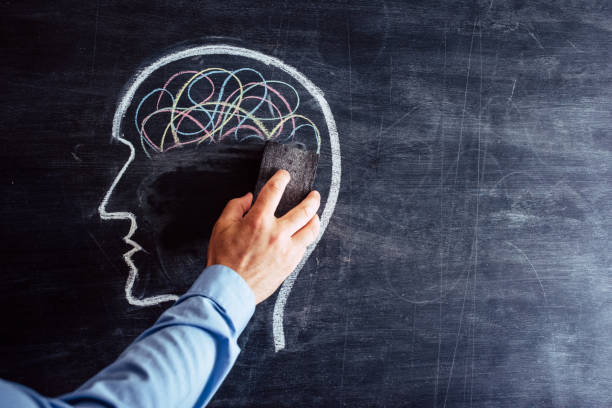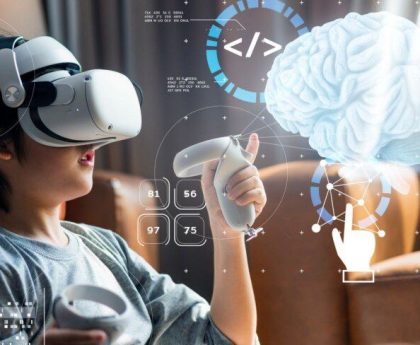Memory markers are powerful tools that can significantly enhance academic achievement by improving recall, comprehension, and retention of information. In this article, we will explore the concept of memory markers, their importance, and practical strategies for using them effectively in academic settings.
Understanding Memory Markers
What Are Memory Markers?
Memory markers are specific cues or triggers that help individuals recall information more easily. These markers can be visual, auditory, or even kinesthetic, and they act as anchors that link new information to something familiar, making it easier to retrieve later.
The Science Behind Memory Markers
Memory markers work by leveraging the brain’s natural ability to associate and link information. When new information is connected to existing knowledge or experiences, it creates a stronger memory trace, making it easier to recall. This process is rooted in the principles of cognitive psychology, particularly the theories of associative learning and the encoding specificity principle.
Types of Memory Markers
Visual Memory Markers
Visual memory markers include images, diagrams, and visual aids that help create mental pictures of the information being studied. These markers can be particularly effective for visual learners who process information best through seeing.
Auditory Memory Markers
Auditory memory markers involve using sounds, music, or rhymes to aid memory. This approach is beneficial for auditory learners who remember information better when it is heard.
Kinesthetic Memory Markers
Kinesthetic memory markers use physical movements or activities to reinforce learning. This method is especially useful for kinesthetic learners who learn best through hands-on experiences.
Implementing Memory Markers in Academic Settings
Creating Visual Aids
One of the most effective ways to use visual memory markers is by creating visual aids such as mind maps, charts, and flashcards. These tools help organize information visually, making it easier to understand and remember complex concepts.
Mind Maps
Mind maps are visual diagrams that represent ideas and concepts linked around a central theme. They help in organizing information hierarchically, making it easier to see the connections between different pieces of information.
Charts and Diagrams
Charts and diagrams can simplify complex information by breaking it down into more manageable parts. For example, flowcharts can illustrate processes, while Venn diagrams can show relationships between different sets of information.
Utilizing Mnemonic Devices
Mnemonic devices are tools that help remember information through association. These can be acronyms, rhymes, or even phrases that make it easier to recall information.
Acronyms
Acronyms involve creating a word from the first letters of a series of words. For example, “HOMES” can be used to remember the Great Lakes: Huron, Ontario, Michigan, Erie, and Superior.
Rhymes and Songs
Rhymes and songs can make information more memorable by adding a rhythmic and musical element. For instance, the alphabet song helps children remember the order of letters.
Engaging in Active Learning
Active learning involves engaging with the material in a dynamic way, which can include discussion, teaching, or applying the information in practical scenarios.
Group Discussions
Group discussions allow students to verbalize their understanding of the material and hear different perspectives. This interaction can reinforce memory markers through repetition and explanation.
Teaching Others
Teaching the material to someone else is one of the most effective ways to reinforce learning. This process requires the learner to organize and explain the information clearly, strengthening their own understanding and memory.
Benefits of Using Memory Markers
Improved Recall
Memory markers significantly improve recall by creating strong associations that make it easier to retrieve information when needed. This can be particularly useful during exams or presentations.
Enhanced Comprehension
By breaking down complex information into more manageable parts, memory markers enhance comprehension. Visual aids, mnemonic devices, and active learning strategies all contribute to a deeper understanding of the material.
Increased Retention
Memory markers help in retaining information for longer periods. The use of association, repetition, and active engagement ensures that the information is not just memorized temporarily but stored in long-term memory.
Practical Strategies for Different Subjects
Memory Markers in Mathematics
In mathematics, memory markers can be used to remember formulas, theorems, and processes. For example, using visual aids like graphs and charts can help visualize mathematical concepts, while mnemonic devices can make it easier to recall formulas.
Visual Aids for Formulas
Creating flashcards with formulas and corresponding diagrams can help in visualizing and remembering mathematical equations. For instance, a flashcard for the Pythagorean theorem can include a right-angled triangle diagram.
Mnemonics for Processes
Using acronyms or phrases can simplify complex processes. For example, the acronym “PEMDAS” (Parentheses, Exponents, Multiplication, Division, Addition, Subtraction) helps remember the order of operations in arithmetic.
Memory Markers in Science
In science, memory markers can aid in remembering terminologies, processes, and concepts. Visual aids like diagrams and models can simplify complex biological structures or chemical reactions.
Diagrams and Models
Using detailed diagrams of biological systems or chemical structures can help in visualizing and remembering intricate details. For example, a labeled diagram of the human heart can aid in understanding its anatomy and function.
Interactive Activities
Engaging in hands-on experiments and interactive activities can reinforce scientific concepts. This kinesthetic approach helps in creating strong memory markers through experiential learning.
Memory Markers in History
In history, memory markers can help in remembering dates, events, and historical figures. Creating timelines and using stories or narratives can make historical information more engaging and memorable.
Timelines
Creating visual timelines of historical events can help in understanding the chronological order and significance of different periods. This visual representation aids in remembering key dates and events.
Storytelling
Using storytelling techniques to narrate historical events can make the information more engaging and easier to remember. For instance, creating a story around the events of a significant battle can help in recalling details and understanding the context.
Memory Markers in Language Learning
In language learning, memory markers can assist in remembering vocabulary, grammar rules, and language structures. Using flashcards, rhymes, and language immersion techniques can enhance language acquisition.
Flashcards for Vocabulary
Creating flashcards with words and their meanings, along with visual illustrations, can aid in memorizing vocabulary. For example, a flashcard with the word “apple” and a picture of an apple can help in retaining the word and its meaning.
Rhymes and Songs for Grammar
Using rhymes and songs to learn grammar rules can make the learning process more enjoyable and memorable. For instance, a song about verb conjugations can help in remembering the different forms of verbs.
Conclusion
Harnessing the power of memory markers can significantly enhance academic achievement by improving recall, comprehension, and retention of information. By understanding the different types of memory markers and implementing practical strategies, students can create strong associations that make learning more effective and enjoyable. Whether it’s through visual aids, mnemonic devices, or active learning, memory markers offer a powerful tool for academic success.





